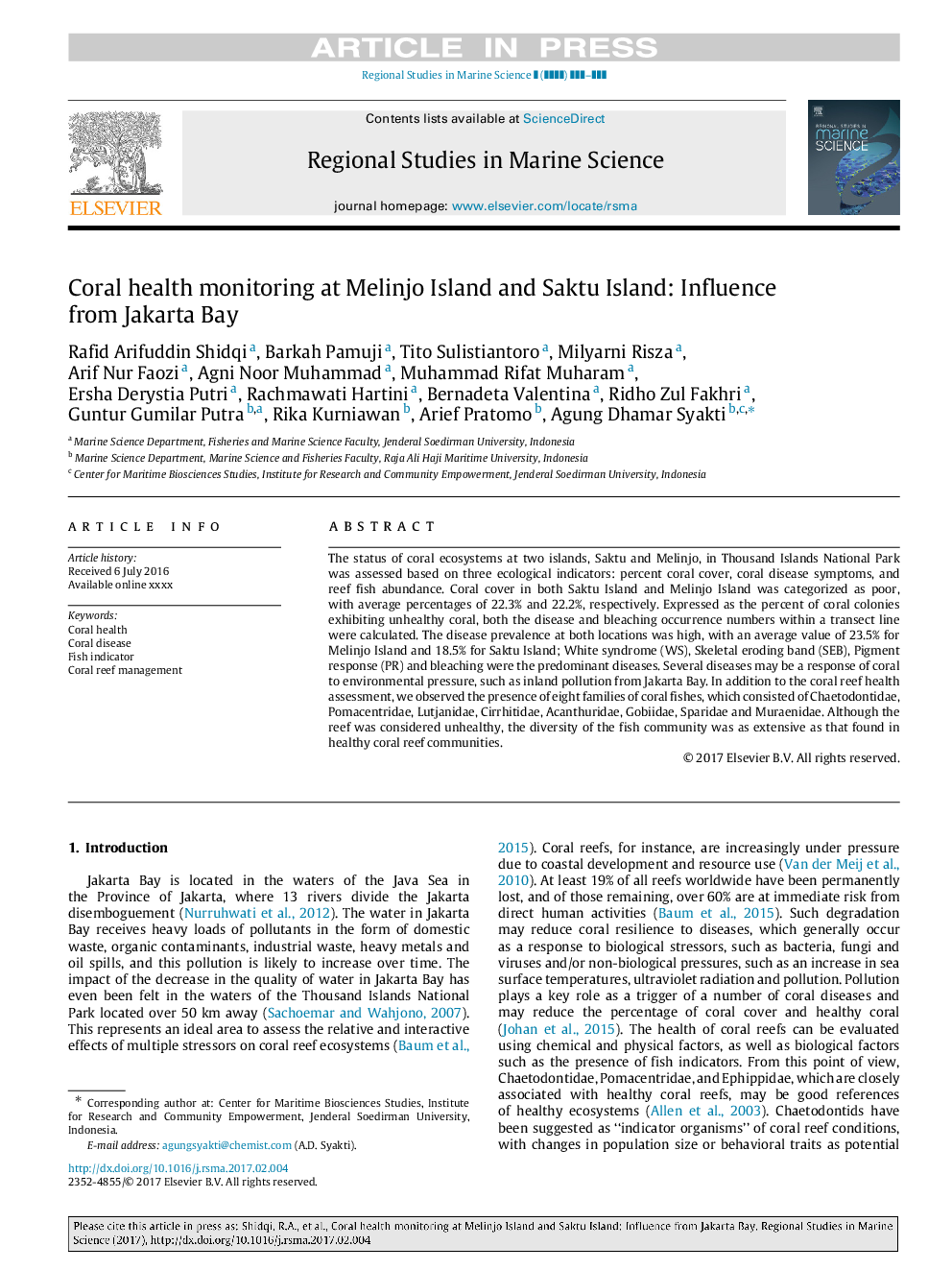| Article ID | Journal | Published Year | Pages | File Type |
|---|---|---|---|---|
| 8872644 | Regional Studies in Marine Science | 2018 | 6 Pages |
Abstract
The status of coral ecosystems at two islands, Saktu and Melinjo, in Thousand Islands National Park was assessed based on three ecological indicators: percent coral cover, coral disease symptoms, and reef fish abundance. Coral cover in both Saktu Island and Melinjo Island was categorized as poor, with average percentages of 22.3% and 22.2%, respectively. Expressed as the percent of coral colonies exhibiting unhealthy coral, both the disease and bleaching occurrence numbers within a transect line were calculated. The disease prevalence at both locations was high, with an average value of 23.5% for Melinjo Island and 18.5% for Saktu Island; White syndrome (WS), Skeletal eroding band (SEB), Pigment response (PR) and bleaching were the predominant diseases. Several diseases may be a response of coral to environmental pressure, such as inland pollution from Jakarta Bay. In addition to the coral reef health assessment, we observed the presence of eight families of coral fishes, which consisted of Chaetodontidae, Pomacentridae, Lutjanidae, Cirrhitidae, Acanthuridae, Gobiidae, Sparidae and Muraenidae. Although the reef was considered unhealthy, the diversity of the fish community was as extensive as that found in healthy coral reef communities.
Related Topics
Physical Sciences and Engineering
Earth and Planetary Sciences
Oceanography
Authors
Rafid Arifuddin Shidqi, Barkah Pamuji, Tito Sulistiantoro, Milyarni Risza, Arif Nur Faozi, Agni Noor Muhammad, Muhammad Rifat Muharam, Ersha Derystia Putri, Rachmawati Hartini, Bernadeta Valentina, Ridho Zul Fakhri, Guntur Gumilar Putra, Rika Kurniawan,
